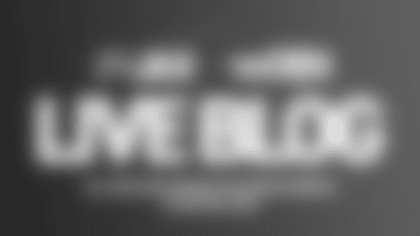##### CBA-related questions and answers
Q. When does the CBA expire should there be no extension to the agreement?
A. In March of 2011.
Q. Will there be a college draft in 2011?
A. Yes.
Q. What is the "Final League Year" in the current agreement?
A. The "Final League Year" is the term used in the CBA to refer to the last year of the agreement. Without a further extension of the CBA, the "Final League Year" would be the 2010 League Year.
Q. What are the differences between the "Final League Year" and any other "League Year?"
A. The principal differences are that in the "Final League Year" there is no salary cap and there are substantial additional restrictions on player free agency and reductions in player benefits.
Q. Is there a Minimum Team Salary in the Final League Year?
A. There is no Minimum Team Salary in the Final League Year. The Minimum Team Salary in 2009 is projected to be $107,748,000, meaning each team is required to allocate $107 million on player costs (not including benefits). The team salary cap in 2009 is $123 million.
Q. Are there individual player minimum salaries in the Final League Year?
A. Yes, but they rise at a rate somewhat slower than player minimum salaries rise in capped years.
Q. Is there an Entering Player Pool in the Final League Year?
A. There may be. The CBA provides that the league has the unilateral right to keep or eliminate the rookie pool in the Final League Year.
Q. Now that 2009 is the last capped year, are there rules that impact player contract negotiations and a club's salary cap planning?
A. Yes. Here are the key differences:
- After the last game of the 2008 regular season, signing bonus proration was reduced from a maximum of six years to a maximum of five years.
- In 2009, there is no June 1 rule for Signing Bonus acceleration. If a player is removed from the roster or his contract is assigned via waivers or trade at any time in the 2009 League Year, any unamortized signing bonus will be immediately included in Team Salary.
- There is no year-end netting of incentives in 2009. Not-likely-to-be-earned incentives are charged to team salary immediately when earned, and likely-to-be-earned incentives are deducted when they are no longer possible to earn.
- Guaranteed salary from 2010 and beyond is reallocated to 2009 unless the entire 2009 salary is guaranteed.
- Fifty percent of guaranteed salary in any League Year beyond 2012 is reallocated to 2009.
- The 30 percent increase rule restricts salary increases from 2009 to 2010. For example: a player with a $500,000 salary in 2009 would be limited to annual salary increases of $150,000 ($500,000 x 30%) beginning in 2010.
- A team can include only three veteran team incentives in a player contract covering 2009 and beyond. These incentives must also be coupled with a playtime requirement. Previously, clubs were limited to eight team incentives and no playtime requirement.














